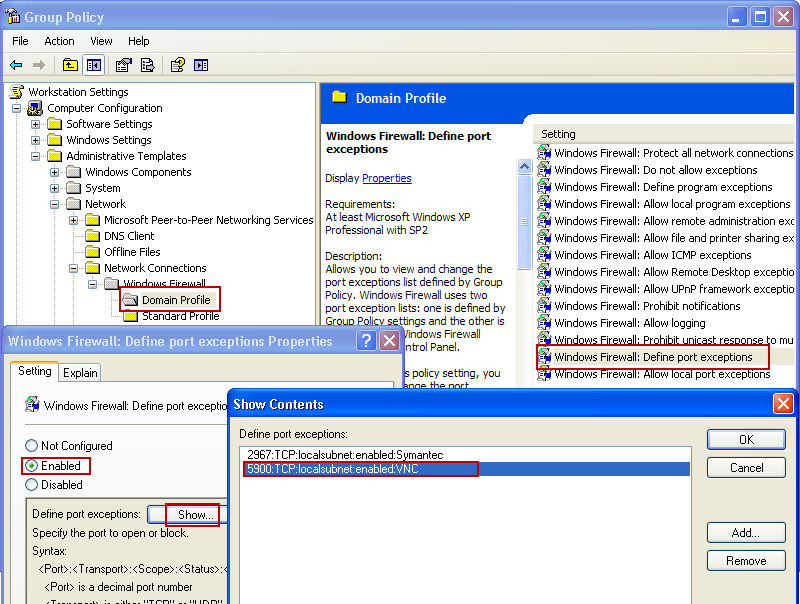

- #VNC CONNECT THROUGH FIREWALL UPDATE#
- #VNC CONNECT THROUGH FIREWALL PC#
- #VNC CONNECT THROUGH FIREWALL FREE#
If your client changes IP address, the ssh connection should drop and the server will try reestablishing the connection. Configuring the Firewall for VNC To enable a specific port, for example port 5902 for TCP, issue the following command as root : lokkit -port. My Remote VNC server was setup to listen on port 5900 (screen 0) So, here is what I did. Connection was insecure, additional port was open on router and connection wasnt very fast even though I had DSL on both ends. Before I had FREESCO forwarding TCP port 5900 to 192.168.1.4.
#VNC CONNECT THROUGH FIREWALL UPDATE#
Now as long as you run a dyndns daemon on the client (or update your IP address manually at ), you can connect to the server. I wanted to connect to computer 192.168.1.4 on remote network. (The /bin/false ensures the vnc server can't actually run commands on the client, only open a port if you don't trust the server you can do more hardening in sshd_config.) This only seems to change the port number that the authentication uses (the initial contact to the VNC host from the VNC client via web browser). On the client, run sshd, and create a user with very little access: sudo useradd -m -s /bin/false vnc_userĬopy the file server:~/.ssh/id_rsa.pub into client:~vnc_user/.ssh/authorized_keys so that the vnc server has ssh access to the vnc client(s). Adding More Users Connecting to VNC Server Connecting over an SSH Tunnel Troubleshooting Conclusion.
#VNC CONNECT THROUGH FIREWALL FREE#
Now, in order to do this from an "arbitrary internet connection", simply get a free account at, and exchange $client in the above command for that dyndns address (e.g. Then just configure your VNC server to listen on port 80 and you should be able to connect just fine (assuming the university doesnt run an application level firewall). Configure the firewall to open the port used by VNC. This is possible from behind a firewall.Įnsure you've created a passphraseless ssh-key on the server ( ssh-keygen, and press return a couple times) so you can put this in a boot script. You could then connect as if you were in the laboratory as you have tested already.
#VNC CONNECT THROUGH FIREWALL PC#
If they enable that for you, you could connect you PC at home to the network at your laboratory, being 'virtually there'. Ask them about a 'VPN Login' which stands for 'virtual private network'. Share Improve this answer answered at 14:55 MDMarra 20. Firewalls are in place to prevent exactly that. In the windows that opens, enter IP address. This opens a reverse tunnel from the server to the client. You can usually just forward port 5900 from your firewall to the computer that you want to VNC into and then connect to your external IP, or get a DDNS provider if your router/firewall supports it. Configure VNC Viewer (Client) Open the viewer by double clicking on the desktop icon created during installation.

Assuming for simplicity that you have only one client (but which can have arbitrary IP's), that the VNC server runs behind a firewall where you can't open ports, but the client has no such problems, a workaround would be to do put this command into an on-boot script on the server: while sleep 100 do ssh -R 5900:127.0.0.1:5900 done


 0 kommentar(er)
0 kommentar(er)
